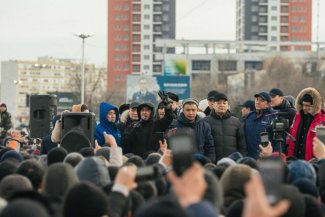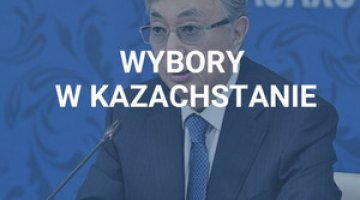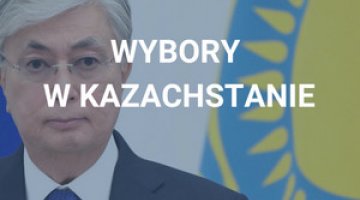Protests escalating in Kazakhstan

Socio-political protests are rapidly spreading and escalating in Kazakhstan. The first demonstrations began on 2 January in Zhanaozen, in the west of the country, against the backdrop of a near-doubling of LPG prices compared to 2021. The protests then gradually spread throughout the region, and expanded to cover the country in the following days. In addition to calls to reverse the price hike, demands to sack the local authorities quickly appeared, and shortly thereafter calls for Nursultan Nazarbayev to go (even though he formally resigned from direct rule in 2019); there were also local clashes with the police and attacks on local administration buildings. On 4 January, demonstrations numbering many thousands of people swept through the capital Nur-Sultan and the former capital of Almaty, where there were fights with the police, cars were set alight and tear gas used; almost all the major cities in the country witnessed similar disturbances. The protests continued next day: according to unconfirmed reports, local administration buildings were to be occupied and police stations were attacked; there were also reports of law enforcement officials going over to the protesters’ side. There have been no reports about casualties.
At first, the authorities adopted a relatively cautious attitude: President Kassym-Jomart Tokayev repeatedly made conciliatory gestures, and emphasis was placed (without result) on preventing the protests (squares and streets were blockaded, and the internet & mobile phone networks were shut down); and on 4 January, the increase in LPG prices was withdrawn. More substantial forces (including the army) and equipment were only brought onto the streets of Almaty in the evening of 4 January, when a state of emergency was declared, limited to the Mangystau oblast (western Kazakhstan) and Almaty. On 5 January, the president dismissed the government. However, these actions have not prevented the crisis from escalating further.
Commentary
- Kazakhstan is the largest and richest country in Central Asia (and the CIS area as a whole, except for Russia); it represents a successful transformation and modernisation of a post-Soviet state, carried out with relatively few domestic conflicts (despite its ethnic diversity, large area and significant social dynamics). In the international dimension, the country retains close ties with Russia (it has participated in most Russian-led reintegration initiatives) and China (which is a key economic partner), but it has also effectively built up and emphasised its sovereignty (including in relations with the Russian Federation) and conducts an active international policy (including holding the presidency of the OSCE in 2010, and leading the Astana Process initiative to bring peace to Syria). Nevertheless, Kazakhstan remains an authoritarian state – although Kassym-Jomart Tokayev is now the president, the country’s de facto leader has been Nursultan Nazarbayev since 1989 – but the repression applied by the system is relatively low-level. An unwritten consensus between the government and society operated almost continuously for the first three decades of independence, in which the limitations in democratisation were initially compensated for by internal stability (against the background of the serious conflicts in neighbouring countries) and, over time, by steady economic development and the (relative) enrichment of society. This consensus was most seriously challenged in December 2011 in Zhanaozen, where a multi-month strike of oil workers was brutally pacified: according to official figures, 18 people were killed during the protests and nearly 90 were injured.
- The current protests also broke out in Zhanaozen, where the majority of the country’s greatest challenges are accumulating. The city is located in an isolated part of the country, traditionally the least peaceful, which is inhabited by the so-called junior zhuz (tribe). At the same time, it is the centre of Kazakhstan’s profitable oil industry and an example of a typical Soviet-era ‘mono-city’. This state of affairs is conducive to spontaneous labour migrations (reinforced by mass repatriations of ethnic Kazakhs from the neighbouring countries), social and material stratifications, nationalist sentiments (often directed against foreign investors and specialists), and the tensions accompanying such phenomena. Against the background of the strong tradition of protest in the region, and the common feeling among local residents that their work is the bulwark of the country’s wealth, the increase in the price of the popular LPG sparked off the current protests. The demonstrations in other cities largely stemmed from the unsatisfactory economic conditions (exacerbated by the effects of COVID-19). They also reflect generational changes, fatigue with the ruling elite (including the long-time leader, whose authority is no longer sacrosanct in the eyes of the young) and the impunity of the local authorities.
- The course of the protests so far suggests that they are undeniably spontaneous and decentralised in nature. There are no indications that they are being coordinated by the weak local or émigré opposition groups, whose leading representative is the former oligarch Mukhtar Ablyazov, currently residing in France, who has ties to Russia. At the present stage, the protesters’ demands are predominantly social, local (for example, talks with the authorities) and generally political (for Nazarbayev’s departure), although they are gaining in momentum. The protests are clearly Kazakh-centric in nature (almost 70% of the country’s inhabitants are ethnic Kazakhs, while a further 20% are Russians): according to sources that are difficult to verify, nationalist and anti-Russian/sovereigntist themes have been heard locally, although there have been no religious (Islamic) references whatsoever. Currently, it is impossible to judge whether or when the groups representing the demonstrators will crystallise into stable entities, or what demands would define the protests’ political dimension. However, it is unlikely that they will run out of steam of their own accord.
- The authorities’ attitude testifies to their far-reaching concern and caution. They have avoided the immediate and brutal pacification of the protests, due to the political, social (as was the case in 2011) and potential economic costs (for example, if the extractive industries were subjected to foreign sanctions) of such moves. The fear that the protests would spill over into the rest of the country (which did ultimately happen) must have had a restraining effect on the government, together with the awareness of how hard it would be to pacify protests over the country’s huge and relatively sparsely populated area (i.e. the need to transfer limited forces over vast distances). In terms of the (unsuccessful) risk that the authorities took, one should consider their concessions regarding the LPG prices in Zhanaozen. They were thus faced with the immediate dilemma of whether to react with force (probably after some delay) or make radical political concessions (which would be difficult for the ruling elite to accept, and also technically hard in the absence of a clear partner on the other side). The option of hoping for the protests to run out of steam and the government spontaneously recovering its authority would have been extremely difficult to bring about. The crisis is also increasing tensions within the elite itself: Tokayev’s position has been strengthened with the dismissal of the prime minister and the expected changes in the management of the energy sector, but this should be treated as just the first stage of a longer process.
- The protests in Kazakhstan (and especially the scenario of a prolonged and deepening crisis in the country) pose a serious challenge for the region, especially for Russia and Central Asia more broadly. Moscow has traditionally been interested in keeping Kazakhstan closely bound to itself. In the Russian media (and in speeches by mid-level politicians), the sovereignty and territorial integrity of the country have repeatedly been questioned in recent times, and alleged violations of the Russian minority’s rights have been raised. The weakening of the Kazakh authorities’ position and their continued dependence on Moscow is in the latter’s essential interest. However, a situation of mass protests – in which concessions have been forced upon the government by the street (and not within the framework of manoeuvres within the ruling elite) – is a serious problem and sets a dangerous example for Russian society. The permanent destabilisation of Kazakhstan would also be a significant potential disruption for Moscow, as it would be forced to undertake another costly involvement while at the same time planning an operation against Ukraine. An additional challenge is the risk of a chain reaction in the region’s other countries – especially in the context of the worsening destabilisation of neighbouring Afghanistan – which would endanger the stability of the local regimes as well as Russia, as patron of the region. Finally, Moscow’s credibility in the eyes of Beijing remains a problem: Central Asia is a kind of ‘condominium’ for both states, in which security issues usually fall within Russia’s purview. Nevertheless, China would treat the undermining of order in Kazakhstan as a direct threat to its strategic interests – quite apart from the potential threats to communication routes and oil & gas supplies. From the EU/NATO perspective, both the variant of the ongoing destabilisation of Kazakhstan and the possibility of the protests’ brutal pacification would reduce the options for dialogue with the most important country in the region. They would also threaten potential soft-security problems, emanating not only from Kazakhstan itself, but also from its southern neighbourhood.




